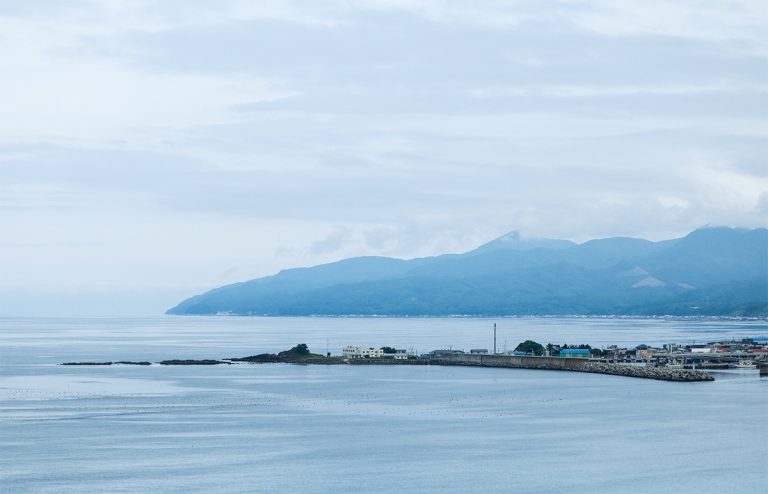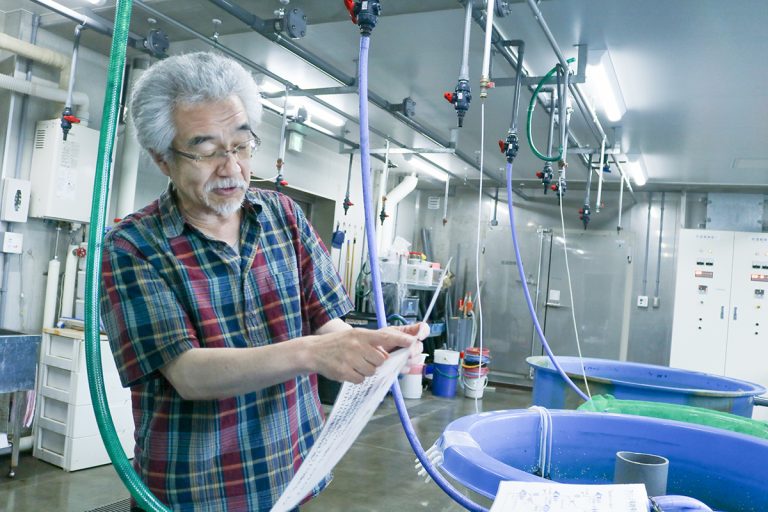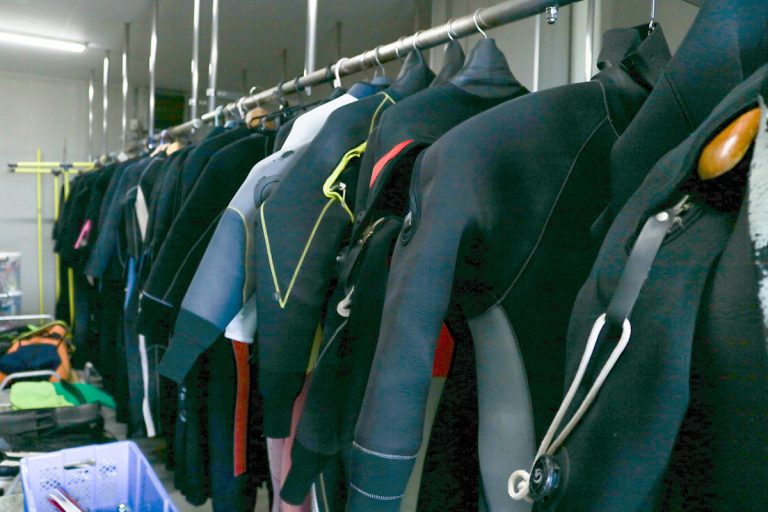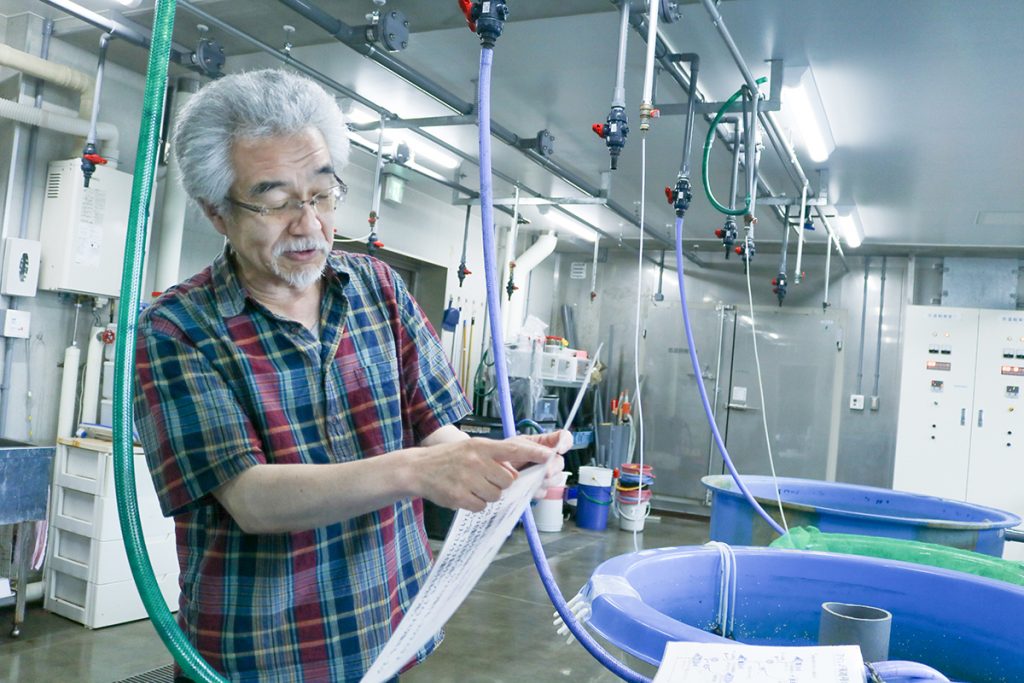
Besides the Sapporo and Hakodate campuses, Hokkaido University has numerous field research facilities, such as research forests, experimental farms, and aquatic research stations. These used to belong to the School of Agriculture, School of Science, and School of Fisheries Sciences; since 2001, they have been operated in an integrated manner as the Field Science Center for Northern Biosphere.
One such field facility is the Usujiri Fisheries Station. Located about a one-hour car ride from the Hakodate campus, it is used year-round for research and educational training. The director, Hiroyuki Munehara, says, “While most marine stations are located in remote areas, the Usujiri Fisheries Station is easily accessible from the Hakodate campus and Hakodate Airport, attracting many researchers not only from within the university but also from inside and outside of Japan.”


The Usujiri Fisheries Station is characterized by its special location where cold and warm sea currents collide, and the variety of species brought in by these currents. Plankton, seaweed, invertebrates such as barnacles, cephalopods such as squid and octopus, and over 300 fish species live in the area, including some endemic species. “One of our missions is to reveal the ecology of northern coastal organisms and show how we can live with the ocean and harmonize with nature,” says Munehara.
The facility consists mainly of a research building and an accommodation building. The research building was rebuilt in 2019 due to the aging of the previous structure. It is equipped with modern facilities such as a fish breeding room, laboratory, and microscope room, where genetic experiments can also be conducted. Seawater is pumped from the sea right in front of the building and supplied to the breeding rooms and laboratories after passing through several sedimentation layers. The abundant seawater is a unique advantage of the seaside laboratory and is used for breeding lingcod and sculpin for research purposes. The accommodation building can accommodate up to 75 people at a time and is used by School of Fisheries Sciences students and many others.

Munehara, who has been the director for 30 years, studied physical chemistry at university and worked for a pharmaceutical manufacturing company after graduation. But, he decided to pursue fisheries science because he thought, “If I am going to work for the rest of my life, I want to deal with the sea and fish, which I have loved since childhood.” He later discovered the extremely rare cross-breeding between different fish species (specifically, closely related lingcod species) and has been researching the application of this mechanism to the conservation of rare species. He has also conducted research on mating and non-mating sculpins. It is believed that mating, instead of fertilization in the water, became necessary for organisms moving from the sea to land. He says that studying sculpins helps us understand this evolutionary process.

Munehara says he senses a change in the sea at Usujiri. “With global warming,” he says, “cold current organisms are decreasing while warm current organisms are increasing. For example, while natural kelp has been decreasing, Ezo abalone and pufferfish have been increasing. Local fishermen need to adapt to these changes as well,” he says. According to Munehara, lingcod has also increased due to its spawning on aquaculture nets for kelp. He says that the impact of manmade objects on ecosystems is another important research theme.

Hokkaido University’s Usujiri Fisheries Station, Nanae Freshwater Station, and the Oshoro Marine Station jointly provide various field training opportunities under a Ministry of Education, Culture, Sports, Science and Technology’s program. Munehara says, “The unique feature of this program is that we accept students from other universities. We offer field training that cannot be experienced in the mainland and is unique to Usujiri, Hokkaido, where warm and cold currents mix,” he says.

Munehara, who will retire in the academic year 2023, reflects, “Especially because we live in an age when it is not easy to send students out into the field or to breed living organisms, we need to provide field experiences and a research environment that only a seaside facility can offer. I hope that everyone who visits this fisheries station will continue to learn as much as possible about marine lives in the northern seas,” expressing his hopes for the future.



